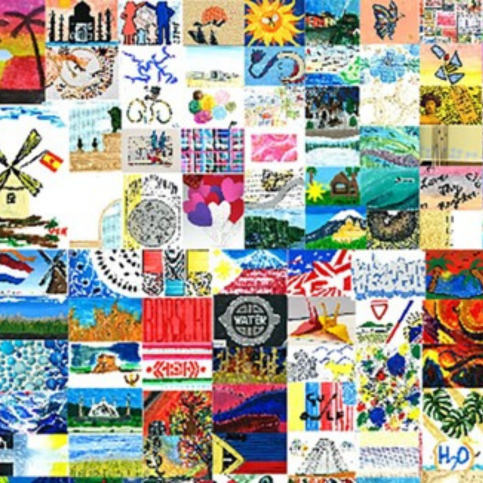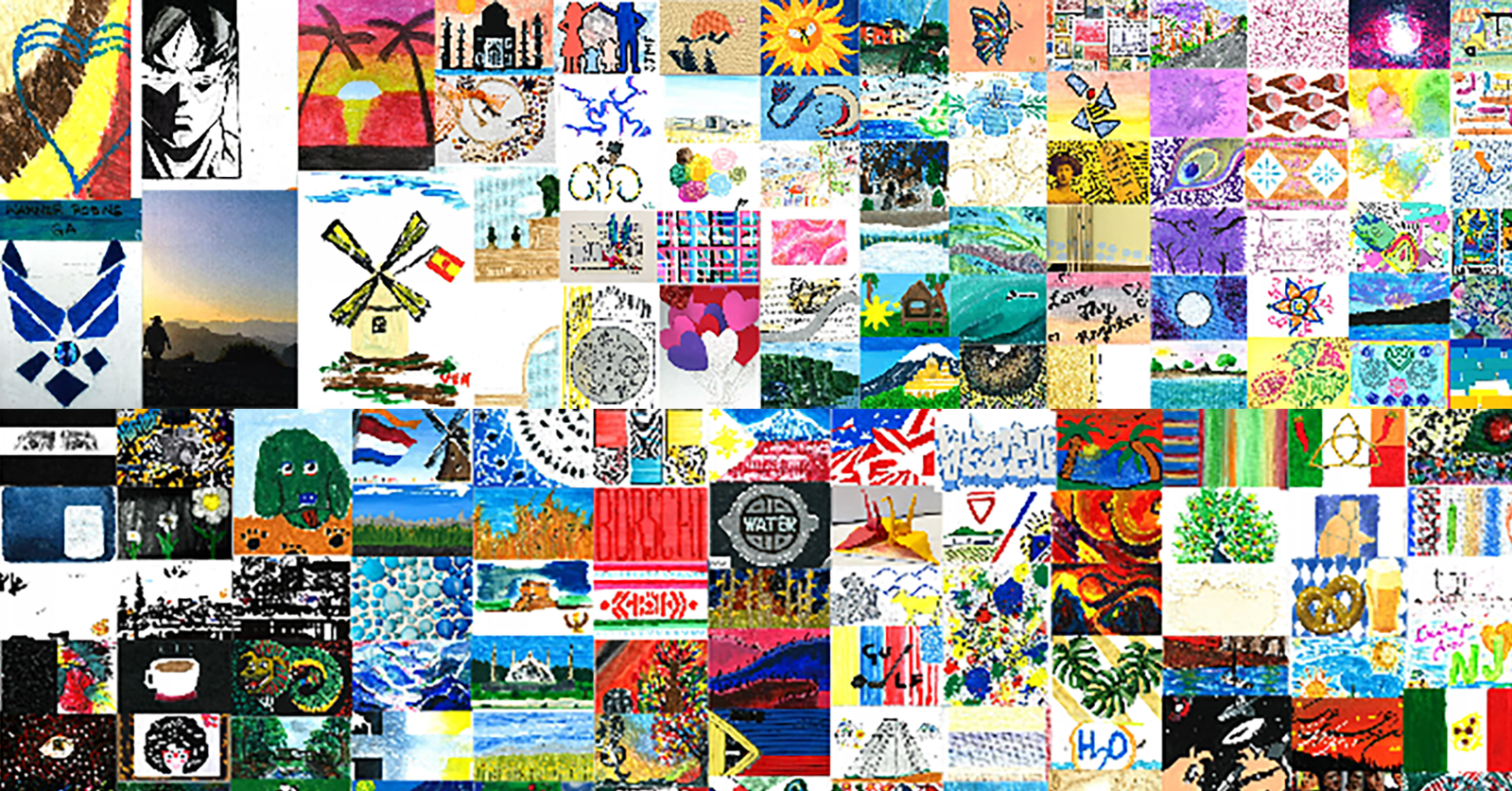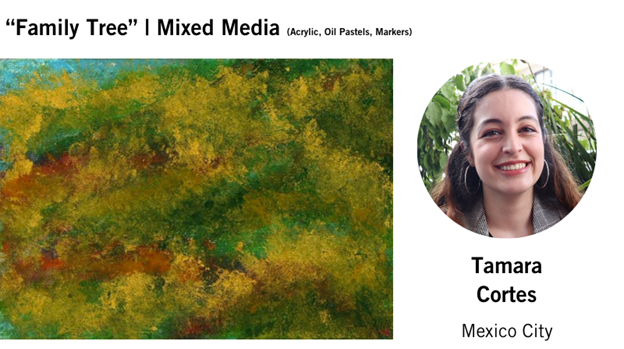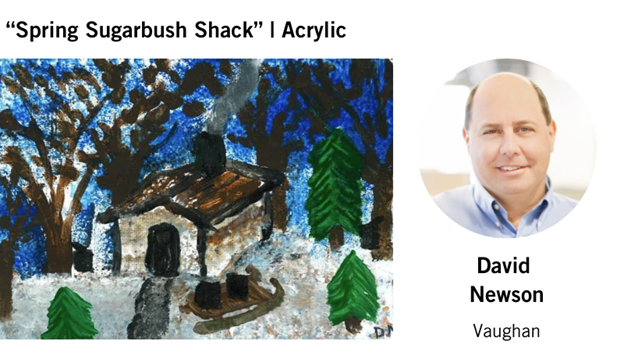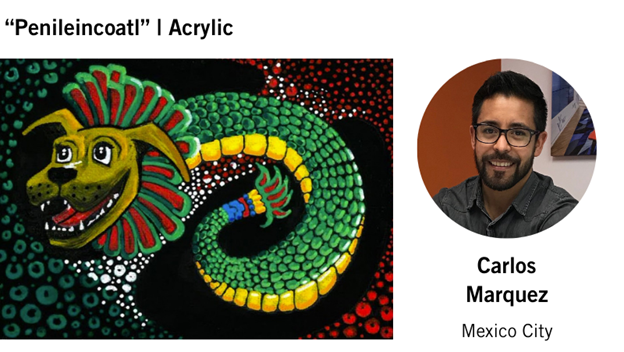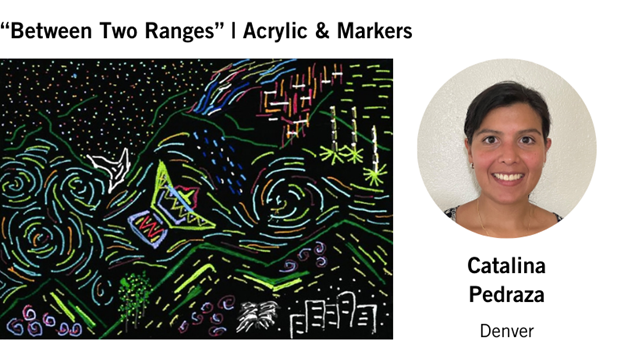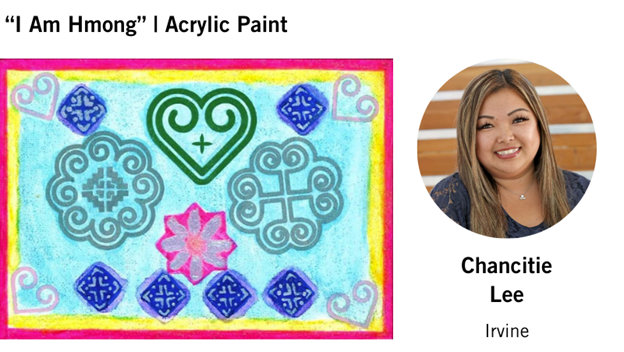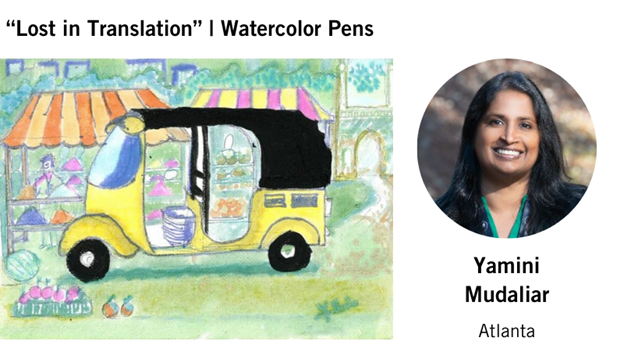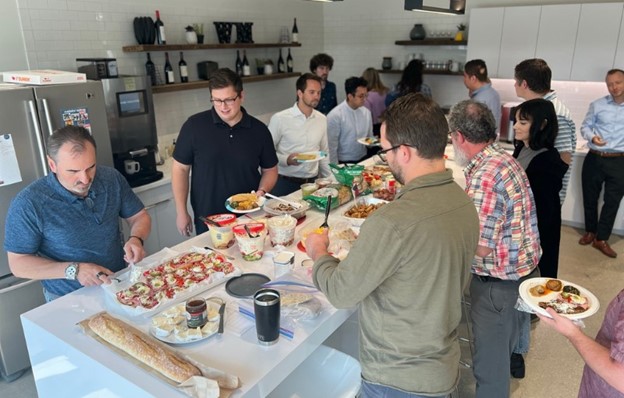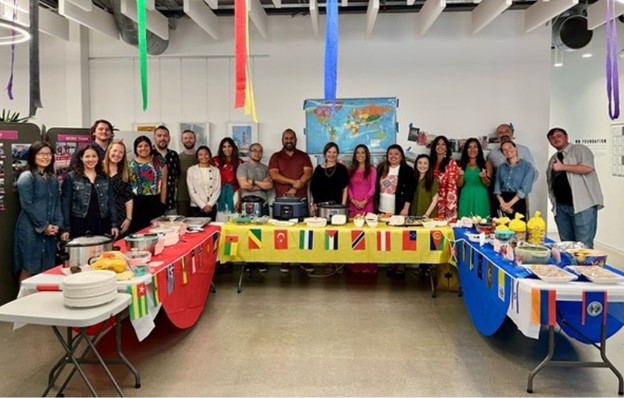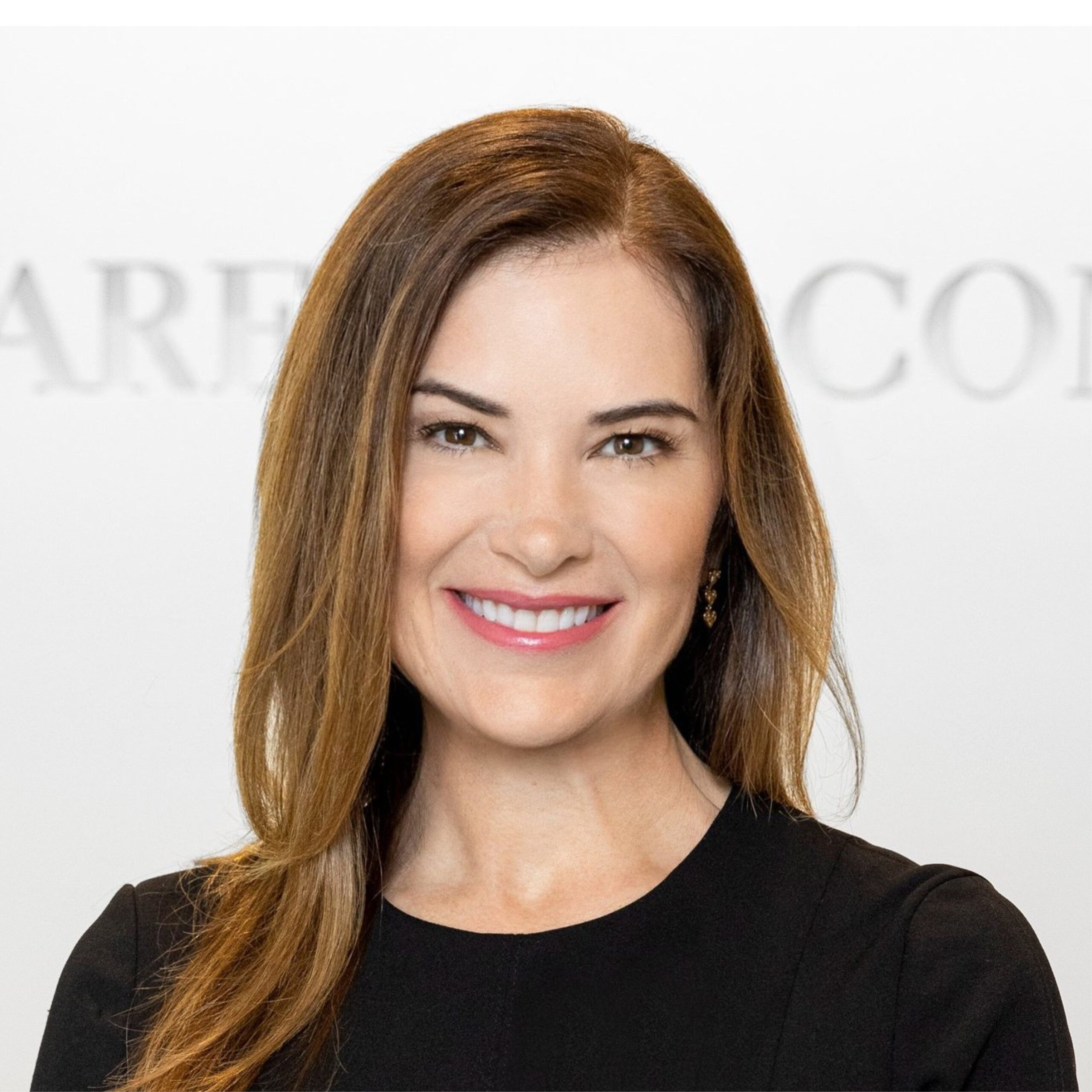In August, Ware Malcomb Heritage Month honors and embraces the diverse backgrounds, cultures, traditions, and unique perspectives that make our company one-of-a-kind. During our annual celebrations, we hold various events across our national and international offices, bringing our teams together to connect and build community. These events celebrate and showcase the diversity and creativity of our employees.
Art Project: A Symbol of Unity and Celebration
Last year, for our inaugural Heritage Month, we conceived an art project to honor the occasion and meaningfully showcase the beauty of our differences and shared values. This activity not only embodied Ware Malcomb’s core values: design, people, innovation, and community, but it also served as a powerful tool to foster a sense of belonging and remind us of the importance of inclusion.
Each participating team member was given a 5×7 canvas to create an art piece representing their identity. They were encouraged to use various art elements to express themselves and were free to choose their preferred medium. What made this project truly special were the personal stories shared by each team member, explaining the meaning behind their art elements or sharing a short personal story about their art piece.
The original art was collected, documented, and incorporated into our Ware Malcomb art installation in our Irvine headquarters. An internal digital art gallery also features each submission, including the artist’s name, title and description. Through this visual representation, we celebrate our collective heritage and team creativity.
Below are just a few examples of how our team members showed their heritage through the beauty of art:
So much of what makes up my identity reminds me of trees – my family, the place I come from, even my own self. My roots are in my parents, my sister, and my husband. I am from Costa Rica, which is covered in trees. I remember being a small child, looking at golden yellow flowers in the tree outside my house and playing with its tiny leaves. I remember my sister and I exploring the forest by my grandparents’ house. I remember the lime trees in my parents’ backyard, where I married my love. This painting approximates how it feels to be under a tree looking up at a sunset on a windy afternoon, calmly swaying in the breeze. My roots are well-planted, and I have so much room to grow.
This is a chronicle of my journey from my country of origin to my adopted country. The three stars and the sun of the Philippine flag transform into a sunset shared by Filipinos who’ve made the journey from our homeland to cities like New York and beyond. All of us come from different countries and cultural backgrounds, but we all share the same sea and sky. Shared journeys and experiences are what make us diverse yet part of one global community.
My great-grandfather used to collect maple sap in the forests on their farms in Quebec each March and April. This involved walking through the melting, deep winter snow with a horse-drawn sleigh used to transport the sap collected from each bucket collected from the maple trees in the forest. The sap is then boiled down to make maple syrup. Each gallon of maple syrup requires 40 gallons of maple sap. The sweet aroma of the boiling sap coming from the sugar shack over the surrounding landscape signaled the upcoming spring and warmer weather after a long, cold winter. Gathering to celebrate this time of year, family, neighbors, and friends would enjoy a traditional meal of pancakes, pork, and beans, all drowning in fresh maple syrup. The experience is like no other.
I love dogs, so I painted the head of my dog, Penny Lane, with the body of Quetzalcoatl, who was an Aztec and Mayan creator god. His name means Feathered Serpent in Nahuatl, the Aztec language, and he was depicted as a combination of the green quetzal bird and a serpent (and in this case, a dog’s head as well).
This piece mimics the art of the Kuna tribe from Aruba in Colombia, where I am from. Their traditional medium is fabric – mostly depicting nature themes. I wanted to reflect on this as half of my life was spent by the Andes Mountains. The other half by the Rocky Mountains. The values of nature and the city have impacted my choices and love of this planet.
This piece was inspired by traditional Hmong clothing embroidery or “Paj ntaub” (Flower Cloth). Traditional Hmong clothing requires highly embellished needlework and is sewn by hand. So many intricate details and layers go along with traditional Hmong clothes, as well as many different versions. Hmong clothes are worn for special occasions like weddings, or the Hmong New Year celebrations every year. I am proud to be Hmong.
The Yellow Auto or the Tuk-Tuk represents the meaning behind my artwork, “Lost in Transition.” My artwork expresses a transition to a memory during my teen years. A warm and fond memory of the smells and sounds of my teenage years in a unique city, Hyderabad, India that helped build my younger self. Sunday market days through the noisy and colorful city markets, where the ubiquitous tuk-tuk drivers stood patiently to bring back weary shoppers home after a delightful day at the market.
This year, Heritage Month events included potlucks, where team members brought a variety of dishes representing their heritage. Dishes could be related to ancestry, regional culture, family traditions, or personal importance. Team members in some local offices also participated in events such as dressing in culturally significant clothing, sharing fun facts to learn about different backgrounds, white elephant exchanges, and sharing culture through gifts.
At Ware Malcomb, our people are crucial to our success. Our core values include providing opportunities for all team members to grow their careers, have a voice, and feel included. Our open culture promotes diversity, equity, and inclusion, cultivating innovation and creativity. We believe robust viewpoints and equal opportunities provide better ideas, a healthy workplace, and more connected teams. We aspire to have our people, processes, and actions reflect the diverse communities that we serve.
